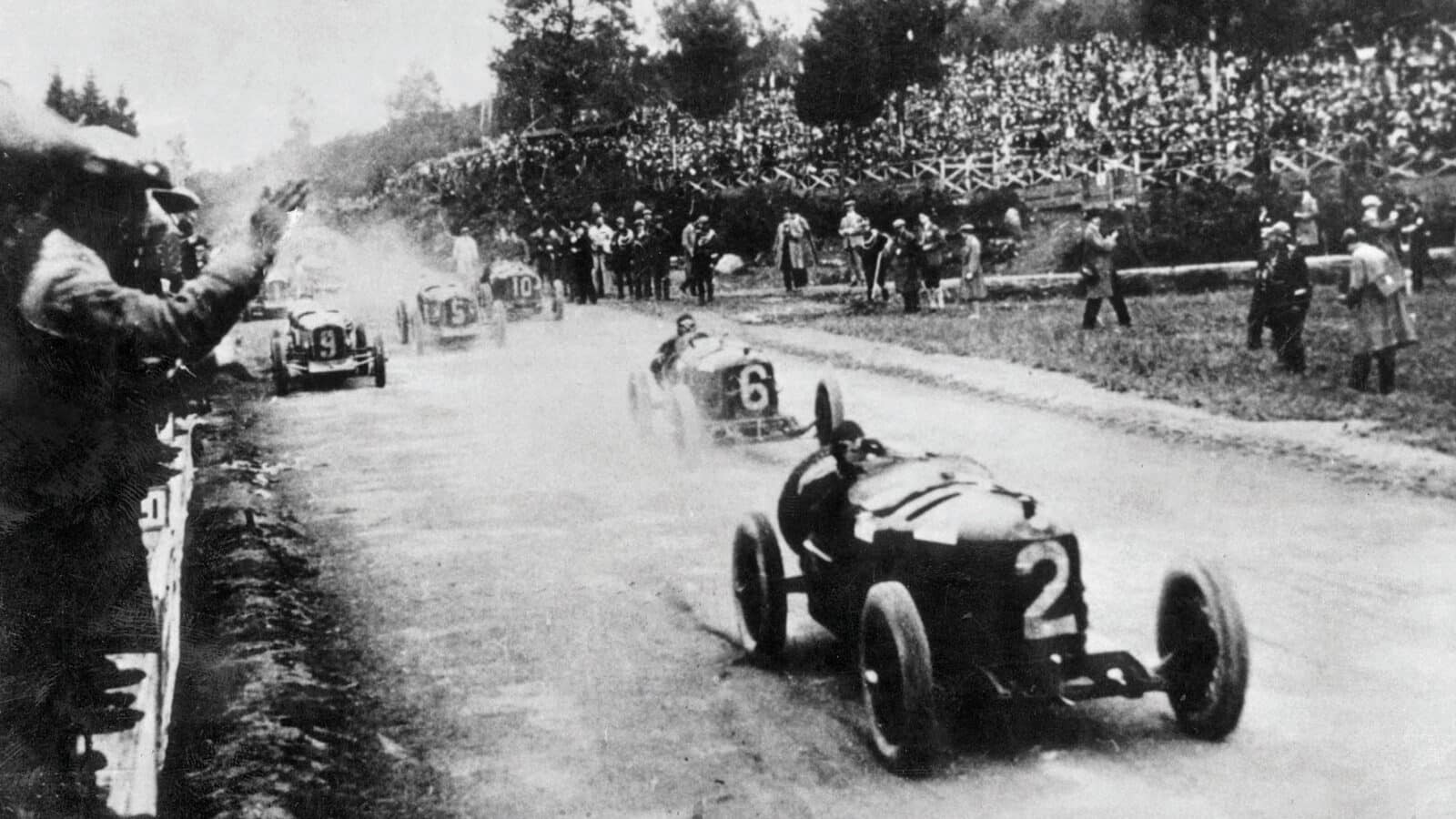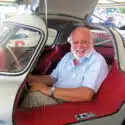F1 celebrates 75 years but don’t forget these other anniversaries
2025 marks the 75th anniversary of the F1 World Championship, but Doug Nye steers us towards some other notable racing milestones

Alberto Ascari, No2, led an Alfa Romeo 1-2 at the 1925 Belgian Grand Prix – Spa’s first GP
Getty Images
As we motor into another winter three variably thought-provoking anniversaries beckon. Seventy-five years ago, on December 15, 1949, a group of national and specialist motoring journalists gathered in rural Lincolnshire for the public unveiling of Great Britain’s eagerly awaited ‘world-beating’ Grand Prix car – the BRM Type 15 V16-cylinder.
It was held in a draughty, leaky Maycrete hut, high on the cold and bleak Folkingham aerodrome. Amongst the woolly wearing, overcoated audience were two invited motorcyclists – Eric Oliver and Denis Jenkinson, who had just been awarded with one of the first postwar ‘gasoline sports’ World Championship titles, having earned it for victory in the FIM’s inaugural Sidecar World Championship. Aboard their 500cc Norton/Watsonian combination they had won both the Swiss and Belgian GP rounds, so right now we see the 75th anniversary of both the all-British BRM V16 – which did so much to make us a motor sport-minded nation – and of both the FIM World Championship race series for motorcycles, and the Oliver/‘Jenks’ domination of its Sidecar series on their British-built motorcycle – remember such things?
Perhaps more to the point it was the success of the FIM two-wheeled Championship which did much to persuade the four-wheeled FIA that a matching Formula 1 Championship for Grand Prix drivers would be a good idea, copying it for 1950. Hence Formula 1 today getting so excited about celebrating its ‘75th anniversary year’ when in fact it’s the 75th anniversary of the Formula 1 Drivers’ World Championship, not of Formula 1 itself – which title had existed since its own low-key launch by the FIA two years pre-Championship back in the 1948 Pau GP.
But into 2025 there’s another significant, though little publicly recognised, anniversary, a true centenary – of the first Grand Prix motor racing World Championship series which was organised by the FIA’s similarly Paris-based predecessor, back in 1925.
Few properly detailed, nor consistent, references were made to it in the contemporary press, even down to specialist motoring magazine level. For example this very title ignored it. So perhaps we should – at least in general terms – correct that record?
“A laurel wreath was added to Alfa’s badge and remained until 1982”
The governing body was known as the Association Internationale des Automobile Clubs Reconnus – or AIACR. At a conference as early as autumn 1923 establishment of a new World Championship for car constructors had been discussed. While broadly in favour, many parties voiced concerns. President of the still dominant Automobile Club de France – the ACF – Count Robert de Vogüé was concerned that a fresh formal series might mimic the mistakes which saw the pre-WW1 Gordon Bennett Cup fail, 1900-1905. Gabriel Voisin was troubled by the difficulty in getting parties to agree regulations, while the veteran pre-WW1 driver and ACF co-founder (Belgian-born) René de Knyff was alarmed that French constructors might not be assured victory! In light of contention and zero Italian interest, support for the idea was left to stew.
But after Alfa Romeo had shone with their new 2-litre P2 model during the Grand Prix season of 1924, the Italian national governing body changed its tune. In February 1925 the AIACR again convened, and its pilot World Championship was agreed, to run that same season. It would comprise four qualifying rounds, the Indy ‘500’ in America, plus the Grands Prix of Europe (the Belgian race at Spa-Francorchamps), France (at Montlhéry) and Italy (at Monza). A points system (1-2-3-4-5-6) applied from first to sixth places, the least points taking the title. Manufacturers scored in only three races of their selection but it was not mandatory to compete in all three selected. Only the lowest point score earned by one of a maker’s cars would count in each race.
A prize of 100,000 francs would comprise 70,000 cash plus a 30,000 objet d’art – a lavish bronze trophy a metre tall, half sprayed gold, half silver. A competition for its design had been won by sculptor Antonio Maraini, and it was made and contributed by the city of Milan.
As the 1925 season went on, 12 companies contested one or more of the rounds – Alfa Romeo, Fiat, Bugatti, Delage, Mercedes, Sunbeam, Duesenberg, Miller, Diatto, Eldridge Special, Guyot, and Chiribiri.
Duesenberg of America won at Indy, a dull Belgian GP saw only three cars still running after half distance, with just two finishing – Antonio Ascari leading an Alfa 1-2. Mercedes – being German – was banned from entering the French GP; Alfa withdrew after its leader Ascari crashed fatally and Delage finished 1-2 to be tied with the Italian team. The Monza race thus would have become the decider , but Louis Delage announced that he intended to concentrate on the San Sebastián GP instead, by inference being more important commercially than any success at Monza…or indeed in this so-what World Championship.
In that near-500-mile Italian GP, the Alfa P2s of Count Gastone Brilli-Peri and Giuseppe Campari finished 1-2 to clinch that inaugural World Championship for the Milanese marque. In celebration, a laurel wreath was added to the marque’s bonnet badge, and remained there until deleted in a redesign as late as 1982.
World Championship? Schmampionship. Few except the winners really cared – but it was run 100 years ago, and remains a landmark.

